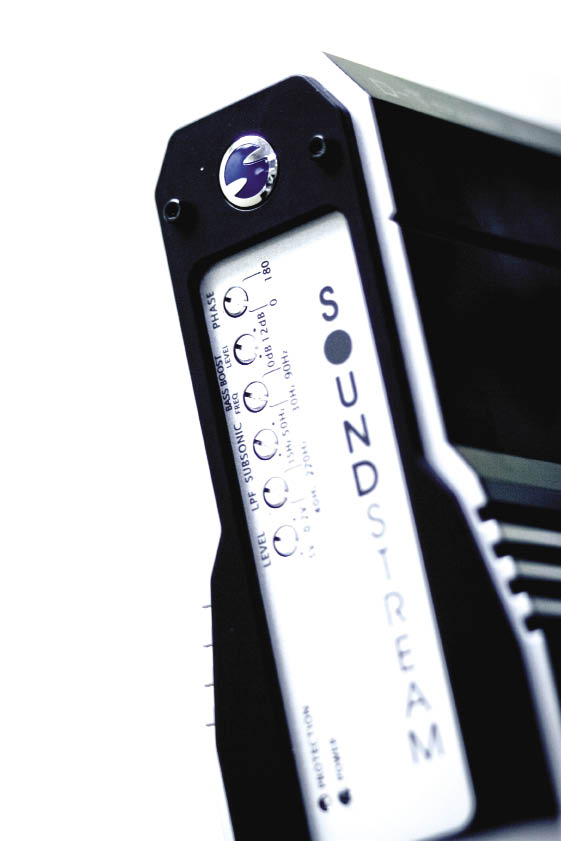LISTENING
I connected the DTR1.1400D to my 2 ohm reference system, and after setting the controls to my listening preferences, I refilled my coffee cup, and sat down to do some listening. As expected, the Soundstream amp delivered plenty of power and authority, and after a bit of tweaking of the phase control, I was really pleased with how well the subwoofers integrated with my full range speakers. The bass was quite tight and natural sounding, with pretty good control of cone inertia. Fast bass lines had good definition, and the subsonic filter could be turned low enough to reproduce the very lowest of notes. I like the ability to adjust the frequency of the bass EQ, and with a frequency range of 30-90Hz, the DTR1.1400D will give you all the control you’ll need. I was also quite impressed with the general efficiency of the amp while playing music. Even when at pretty serious volume levels, the average current draw was easily within the capabilities of a stock charging system. The blue Power LED is very bright, and cast a glow all the way across my listening studio.
PERFORMANCE/BENCH MEASUREMENTS
Before I get into the specific performance of this amplifier, I thought I should explain a bit about a common problem “bench techs” have when measuring some Class D amplifiers. A common issue with Class D amplifiers is the amount of noise in their output signal, which is caused by the high frequency square “carrier” waveforms used to generate the audio output. While this noise is well above any audible frequencies, (typically 50-80kHz) it is measured by test equipment, and is easily seen on
an oscilloscope.
 |
 |
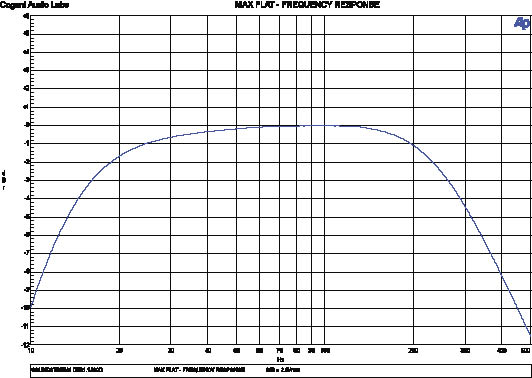 |
 |
With the Soundstream DTR1.1400D, perhaps because the signal cables are on the same end of the amp as the power supply, and that convenience requires a signal cable be routed all the way through the internals of the amp, the amplifier had quite a bit of high frequency noise on it’s outputs, more in fact than many competitive products. But, because this noise is well above the audible spectrum, and most certainly higher than any subwoofer could ever reproduce, it’s generally not a problem. That is, until you attempt to measure power using a standard distortion/noise specification as a limit. The industry standard is 1.0%, but this limit is difficult for many Class D amplifiers to stay below, because of the high frequency noise they generate.
As a result, Soundstream does not spec the power of these amplifiers using the 1.0% limit, instead it would appear that they use the point at which the amplifier begins to clip, which is a real world indication of the power limits of the amp in the intended application.
Disregarding the 1.0% limits because of the noise issue, I measured the output power of the amp using the clipping point as the limit, and my results were extremely close to the advertised specifications. Efficiency was good at about 89% at full power and still 78% at 1/3 power, where most of the listening is actually done. Signal to noise with an A-weighted filter was also pretty good at -70dBA at 1 watt. (The switching noise is so far above the audio spectrum, it typically does not have a significant effect on S/N ratio measurements)
The amp has under and over voltage protection, as well as thermal and short circuit protection. All of these circuits worked perfectly. Phase adjustability was 122 degrees of adjustment at 100Hz. The built in Bass EQ with its adjustable frequency as well as boost, worked exactly as indicated. The crossover and subsonic filters are -12dB/octave designs, and were accurate and easy to adjust.
Related Articles
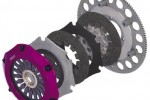 Project R32: Proper Exedy Racing Clutch Selection
Project R32: Proper Exedy Racing Clutch Selection
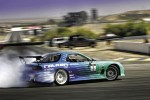 Getting Hyphy: Calvin Wan's 1993 Mazda RX-7
Getting Hyphy: Calvin Wan's 1993 Mazda RX-7
 BIG BALLIN'
BIG BALLIN'
 Rugrat: Sean Driscoll's 2004 Scion xB
Rugrat: Sean Driscoll's 2004 Scion xB
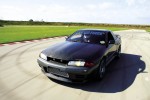 Project R32: Adjustable Suspension Links
Project R32: Adjustable Suspension Links
 Rockford Fosgate T2500-1
Rockford Fosgate T2500-1


